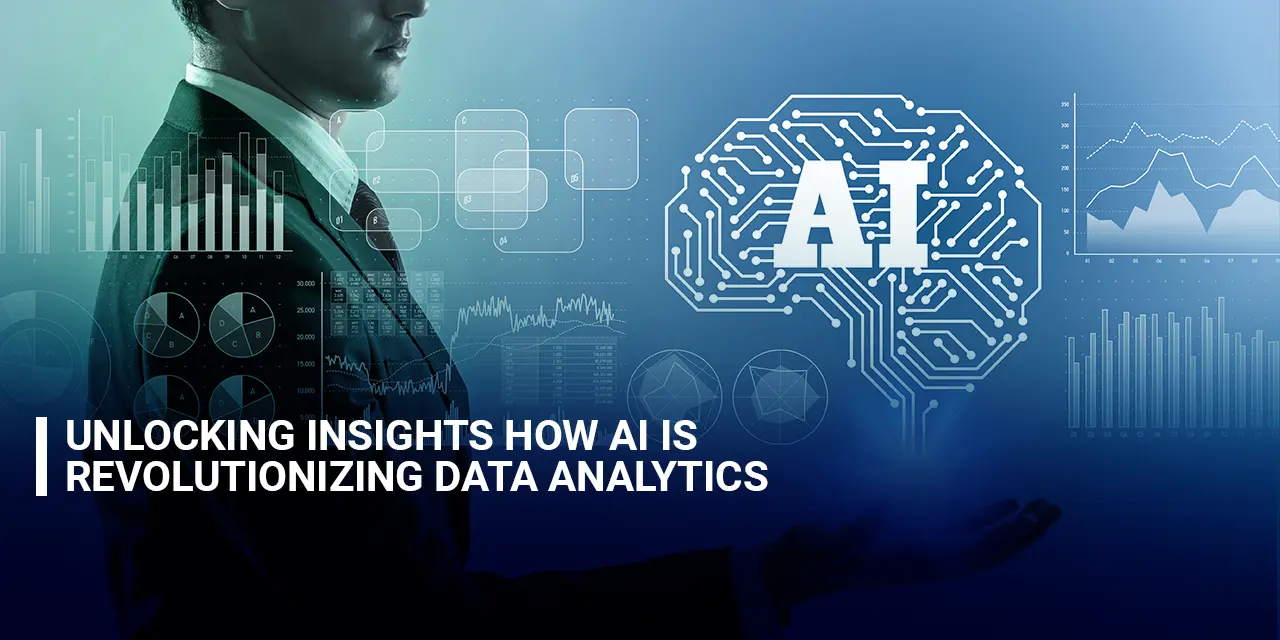Research
Share Knowledge
Brainstorm Ideas
The Evolution of Data Analytics:
Data analytics has evolved significantly over the years, from basic descriptive analytics to more advanced predictive and prescriptive analytics. Descriptive analytics focuses on summarizing historical data to understand past performance, while predictive analytics uses statistical algorithms and machine learning techniques to forecast future outcomes. Prescriptive analytics takes it a step further by recommending actions to optimize future performance based on predictive insights.
While traditional analytics techniques have proven valuable, they often struggle to handle the scale, complexity, and real-time nature of modern data sets. This is where AI-powered data analytics comes into play, offering capabilities to process, analyse, and derive insights from large and diverse data sets with unprecedented speed and accuracy.
AI-Powered Data Analytics:
AI-powered data analytics leverages advanced algorithms and techniques to extract meaningful patterns, trends, and correlations from data. These algorithms can learn from data patterns, adapt over time, and uncover insights that may not be apparent to human analysts. Let's explore some keyways in which AI is revolutionizing data analytics:
1. Machine Learning Models:
Machine learning algorithms can analyse large volumes of data to identify patterns, anomalies, and trends. By learning from historical data and making predictions based on patterns, ML models enable organizations to make informed decisions and drive business outcomes.
2. Natural Language Processing (NLP):
Natural Language Processing techniques enable organizations to analyse and derive insights from unstructured data sources such as text documents, emails, and social media posts. NLP algorithms can extract information, sentiment, and intent from text data, enabling organizations to gain a deeper understanding of customer feedback, market trends, and emerging topics.
3. Image and Video Analytics:
AI-powered image and video analytics techniques allow organizations to extract insights from visual data sources. Image recognition, object detection, and facial recognition are just a few examples of how AI is used to analyse and interpret images and videos for various applications, including healthcare, retail, and security.
4. Predictive Analytics:
AI enables predictive modelling techniques that forecast future trends, behaviours, and outcomes based on historical data. Predictive analytics algorithms can identify patterns and correlations in data to make accurate predictions about customer behaviour, market trends, and business performance.
5. Anomaly Detection:
AI algorithms can detect anomalies or outliers in data that deviate from normal patterns. Anomaly detection techniques are used in various applications, including fraud detection, cybersecurity, and predictive maintenance, to identify and mitigate potential risks and issues.
Benefits of AI-Powered Data Analytics:
The adoption of AI-powered data analytics offers numerous benefits for organizations across industries:
1. Improved Decision Making:
AI-powered data analytics provides organizations with deeper insights and actionable intelligence to make informed decisions. By leveraging advanced algorithms and techniques, organizations can identify opportunities, mitigate risks, and optimize business processes more effectively.
2. Enhanced Customer Experience:
AI enables organizations to analyse customer data and deliver personalized experiences tailored to individual preferences and needs. By understanding customer behaviour and preferences, organizations can anticipate needs, provide relevant recommendations, and enhance customer satisfaction and loyalty.
3. Increased Operational Efficiency:
AI-powered automation streamlines data processing and analysis tasks, reducing the time and effort required for manual intervention. By automating repetitive tasks and workflows, organizations can improve operational efficiency, reduce costs, and free up resources for more strategic initiatives.
4. Risk Mitigation and Compliance:
AI-powered analytics enables organizations to identify and mitigate various risks, including fraud, cybersecurity threats, and compliance violations. By analysing vast amounts of data in real-time, organizations can detect anomalies and deviations from normal patterns, enabling proactive risk management and regulatory compliance.
Challenges and Considerations:
While AI-powered data analytics offers significant opportunities, organizations must also address potential challenges and considerations:
1. Data Privacy and Security:
With the increasing volume and variety of data being analysed, organizations must prioritize data privacy and security. Implementing robust data governance policies, encryption techniques, and access controls is essential to safeguard sensitive information and mitigate the risk of data breaches.
2. Interpretability and Transparency:
AI models can sometimes be perceived as black boxes, making it challenging to interpret their decisions and outputs. Ensuring model interpretability and transparency is crucial for building trust and understanding how AI-driven insights are derived.
3. Ethical Considerations:
AI algorithms may inadvertently perpetuate biases or discrimination present in the data they analyse. Organizations must be vigilant in identifying and mitigating biases to ensure fair and ethical use of AI-driven insights.
Conclusion:
AI-powered data analytics is revolutionizing the way organizations extract insights from their data, enabling them to make informed decisions, improve operational efficiency, and drive business outcomes. By leveraging advanced algorithms and techniques, organizations can unlock valuable insights and uncover hidden patterns and correlations that may not be apparent to human analysts. However, realizing the full potential of AI in data analytics requires a holistic approach that addresses technical, regulatory, and ethical considerations. By embracing AI-driven innovation and fostering collaboration across teams and disciplines, organizations can harness the power of AI to unlock new opportunities for growth and innovation in the data-driven era.
How Can We Help?
ITPN leading-edge capabilities, top-class experts, and pioneering experience in this area. Please contact us if you have any questions or need assistance regarding our services.

